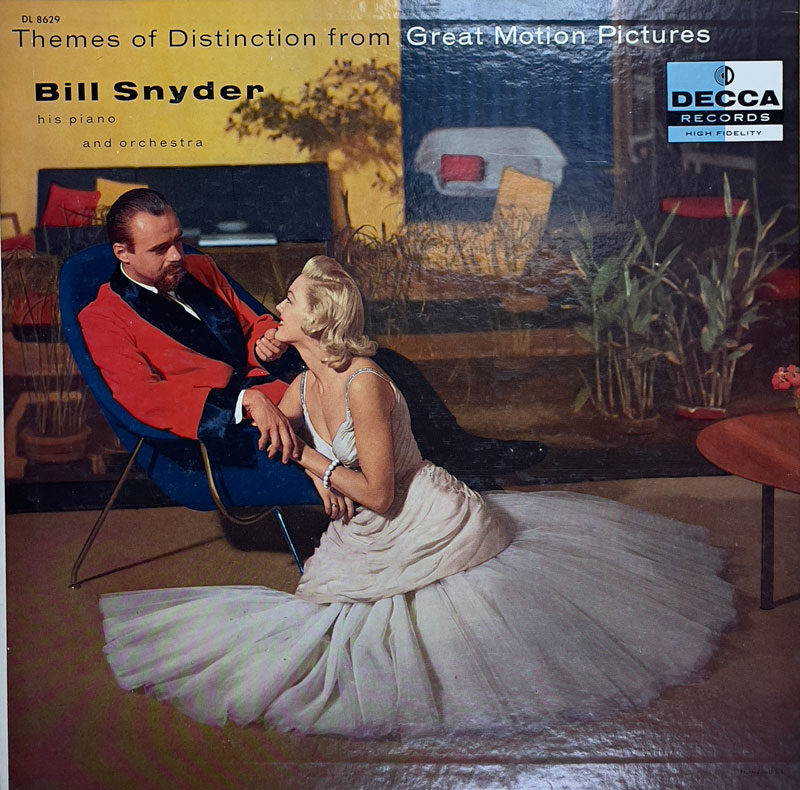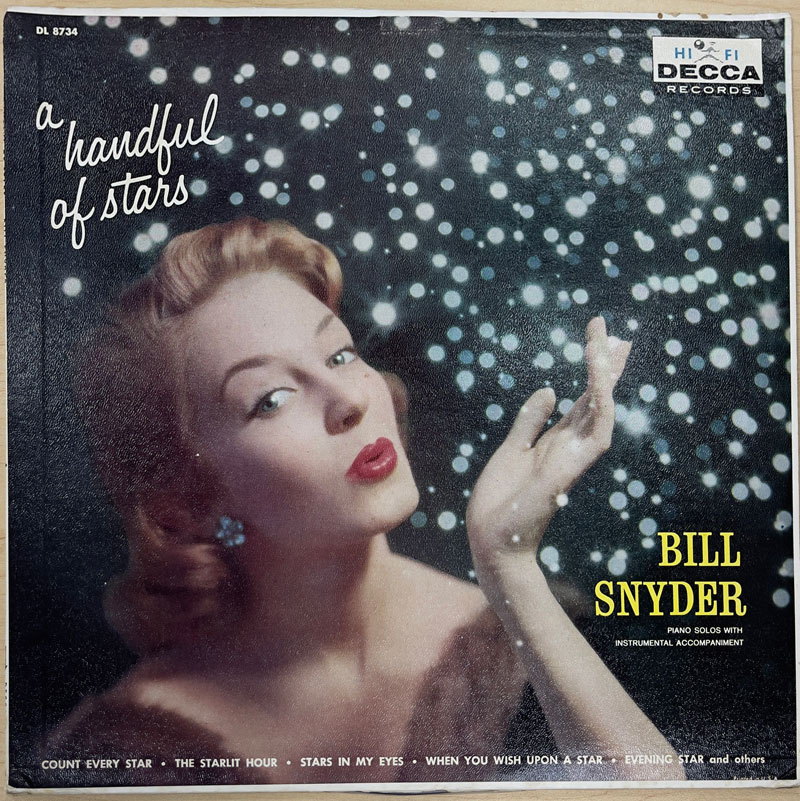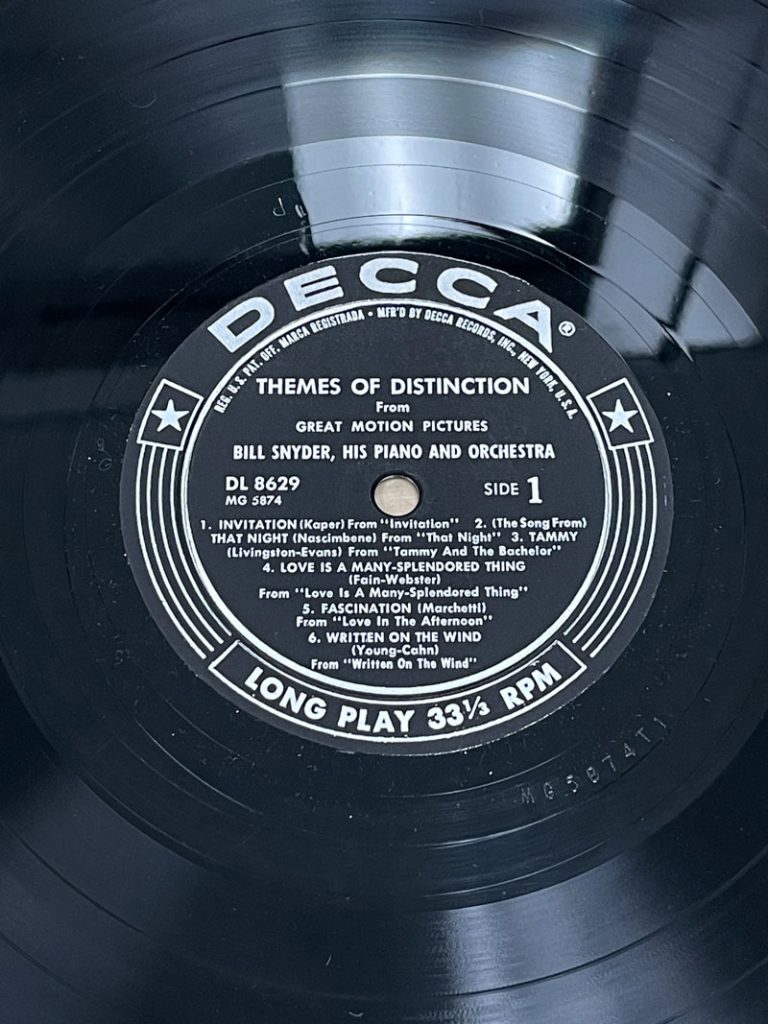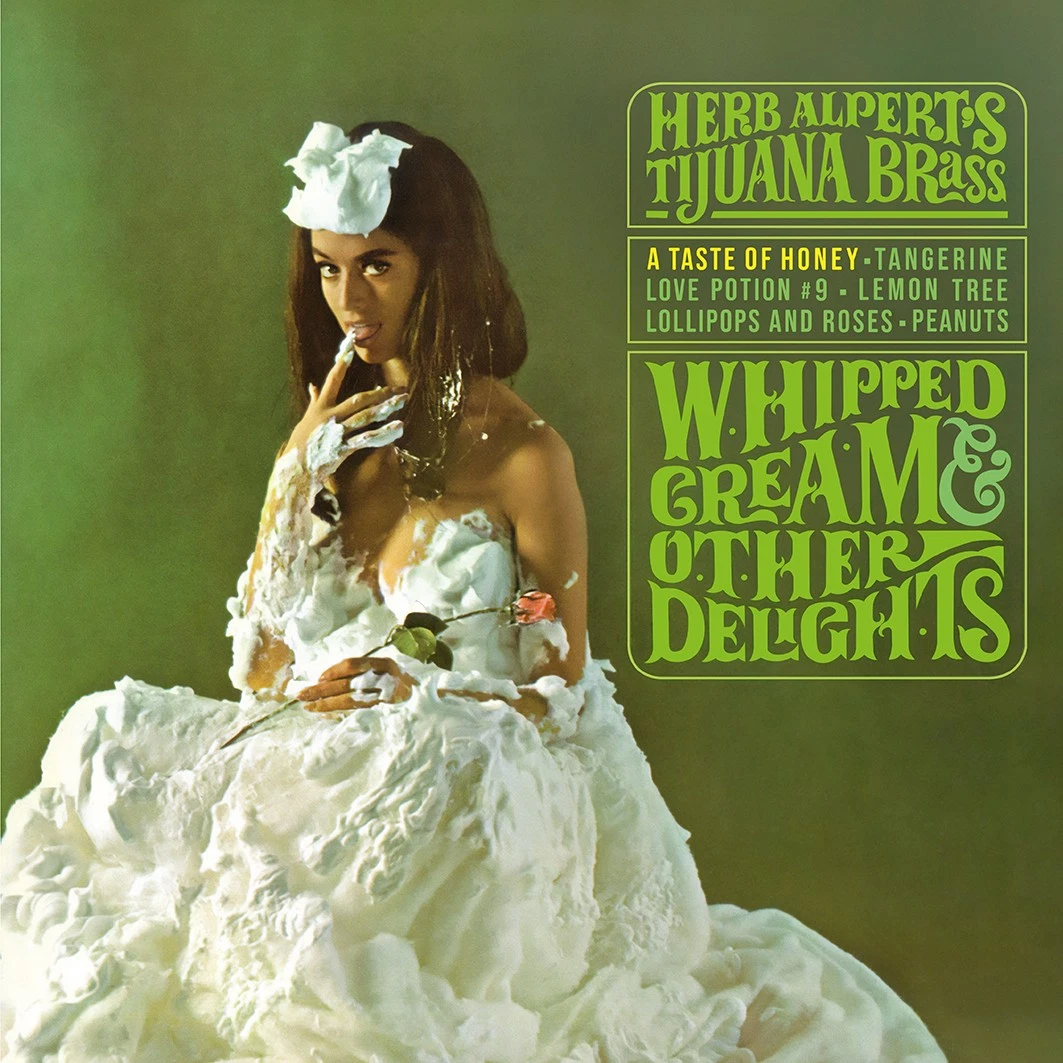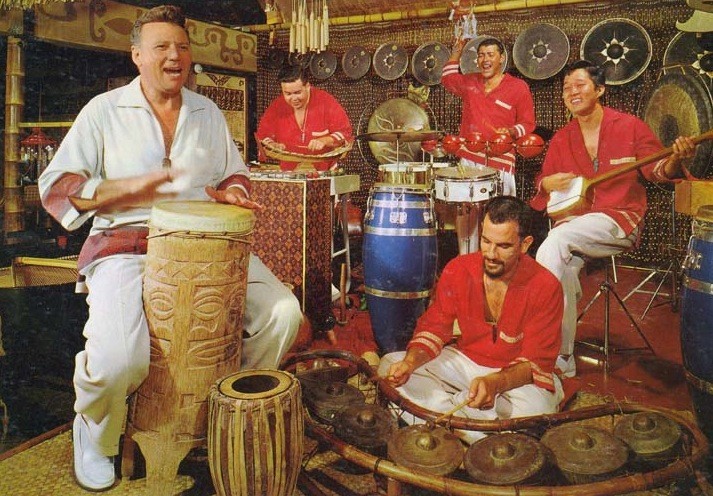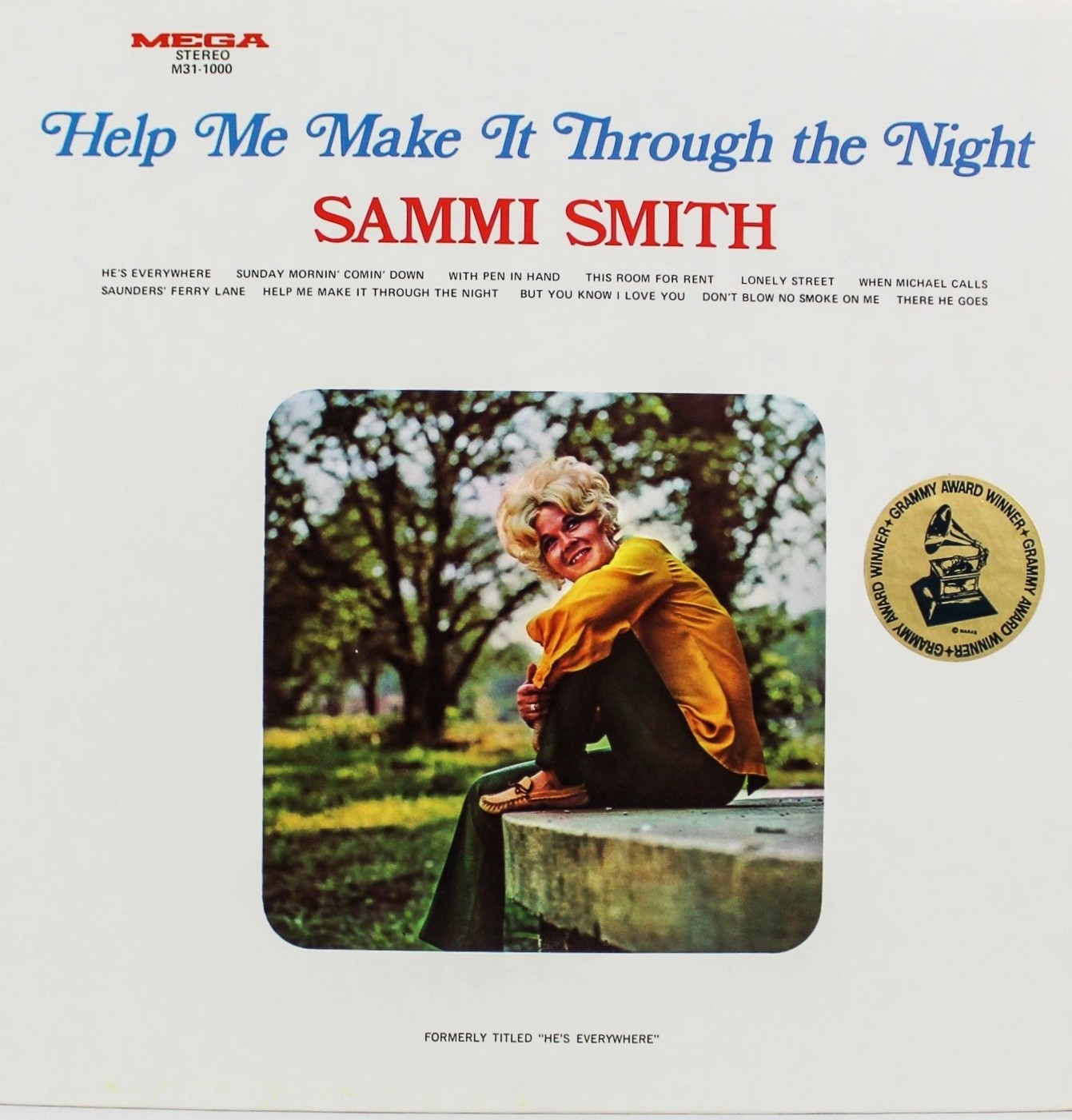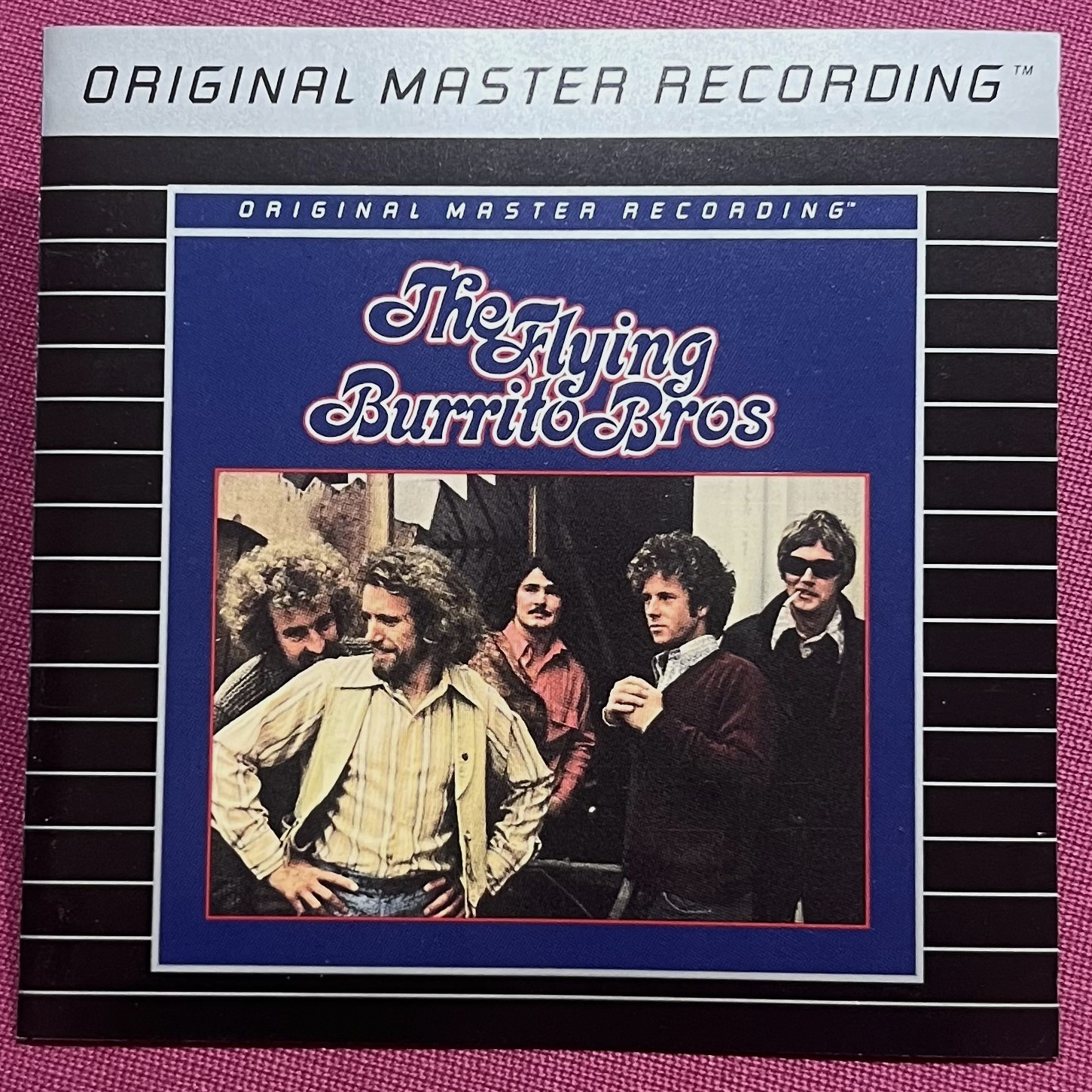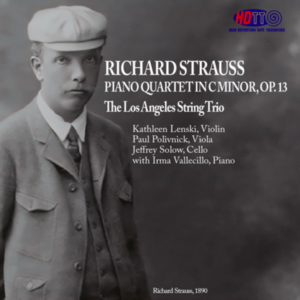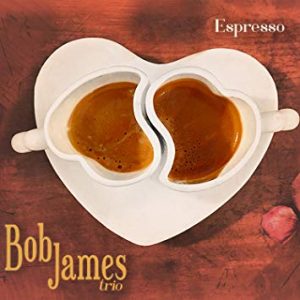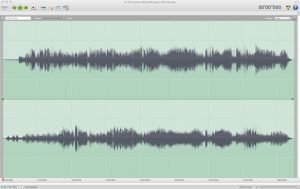Who the heck was Bill Snyder? Based on the scarce info I could find, William P. Snyder (1916-2011), from Fond du Lac, Wisconsin, was America's most recorded light music pianist during the 1950s. Unfortunately for Bill's legacy, today's music lovers don't listen to the dim lit sound of light pianists, especially on mono LPs from the 50s. I'm not an expert on the art of light piano playing, but in small doses I enjoy it. One obvious requirement for this music is that pianists play a lot of glissandos, and Bill's powerhouse glissandos were, well, quite powerful. Bill also sounds more interesting than most of the easy going pianists of his era, or better said, the records by the light music pianists that I've tried. Roger Williams, whose stereo Kapp LPs used to clog the thrift stores, was Snyder's successor to the record buying public. I enjoy Snyder's pianism. I do not enjoy Williams.
Why did I buy my first Bill Snyder LP? That's an easy question to answer. It was there! It was also in nice condition. I also have a soft spot for the breakable Decca LPs. They just happen to sound good. Deccalite was Decca's brand name for the titles that they pressed on polystyrene, better known as styrene. Styrene was used to cut the cost of making records, and most of the record companies avoided it. Styrene's reputation is not a good one, so this is probably the only place where you'll read its praise. Styrene breaks like shellac if you drop it, but if you treat it with respect the excellent Decca sound is rewarding. When I've compared Deccalite pressings to the subsequent vinyl pressings of the same title, the Deccalites usually have better bass, and a faster and cleaner midrange. The dynamics and the decay are also better. Pianos and the lower pitched strings benefit the most from Deccalite. It allows the bottom end power of a piano to come through cleaner, and plucked strings simply sound more like the real thing. Other labels pressed styrene records during the same era, but nobody pressed them with better results than American Decca. Columbia's House Party 10" records were pressed on styrene, and the few that I own sound excellent. However, Mercury's use of styrene wasn't as successful. Although the LPs benefited from the solid bass and clean midrange of styrene, the Mercury styrenes had mild breakup on vocals. I always hear a little bit of grunge at the very top of a singer's voice, as demonstrated by Vic Damone and Helen Merrill.
I own two Bill Snyder LPs. They are Themes Of Distinction From Great Motion Pictures (Decca DL 8629) and A Handful Of Stars (Decca DL 8734). Today I am reviewing the better of the two titles.
Side one cut two of Themes Of Distinction From Great Motion Pictures is "The Song From That Night," from the film That Night. I've never heard of this film, but I sure like this little Snyder gem. The music opens with a harp glissando, followed by shimmering strings. The main theme is played by Snyder's piano, which comes in right after the intro. This is romantic dance music at its best, and the way the music rises out of absolute silence is exactly what we read about when we read high end audio reviews. The only difference is it's coming from an old mono record that was released in 1957! The bass is solid, and the strings have natural air without glare.
Side one cut three is a tune which should be familiar. It's an instrumental version of the song "Tammy" from the film Tammy And The Bachelor. I'm not a fan of the sappy smash hit by Debbie Reynolds, but I love it as an instrumental. Chet Atkins recorded a great guitar version of it, and now, thanks to Bill Snyder, I have a really good piano version. In Snyder's hands it becomes what it should have been all along, as in absolutely beautiful. The sound is also beautiful. The winds flow like a mountain stream, and their tonality is like pure silk. This is the kind of sound that audiophiles dream about.
Side two cut five is "Laura" from the film Laura. I can't begin to count the number of times I've encountered this tune on old records, and I still can't remember how it goes. It's a great tune when I hear it, but it never sticks. Having said this, it sure sounds great when Snyder "and his orchestra" play it. The strings are overloaded at the very start, but after that the sound is sublime. The bass is deep and solid, and the midrange is free from congestion.
The album closes with "Away All Boats" from the film with the same name. The music rises from utter silence, in the way that live undoctored sound does. The deep bass is subtle, but it's there. The bottom end of Snyder's piano, a sound that used to sound like thunder, is merely solid. Effortless magic is the best way to describe the sound of this remarkable recording, which even features the sound of an it's-right-there page being turned. That little metallic clunk from a music stand is pure audio gold. Heck, this album is pure audio gold.
A piano that sounds like thunder is weird, is it not? It's also true. The bottom end of Bill Snyder's glissandos used to have a thundering sound. A preamp ago, a pair of speakers ago, and three cartridges ago, the bottom end of Snyder's piano used to explode like thunder. This was clearly a distortion of dynamics that fortunately I have fixed. His piano must have sounded extremely thunderous on the mono record players of the mid 50s, and I'm sure that was part of Bill's appeal. From what I can hear today, with vast improvements in my audio system, Synder's left hand was indeed powerful. His left hand was louder than Liberace's left hand, so it caused mic preamps and tape to overload in a unique manner. As there is nothing harder for an audio system to reproduce than recorded distortion, so the end result of Synder's piano had a thundering bottom end.
Although I've already discussed the sound of this record through selected cuts, it's worth noting that because of this recording's extremely low distortion, the music is very easy to absorb. Also, playing Deccalite isn't for every cartridge. I was mightily impressed at how quiet and correct the Hana EH played this record. The Hana uses a traditional elliptical tip, which in my view is the most consistently correct sounding stylus shape. I've owned more expensive cartridges with fancier stylus tips, but this record plays right into all of the EH's strengths. Also, the bass on this LP is remarkable. What used to sound like thunder is now a big, rich, and fabulously played piano.




